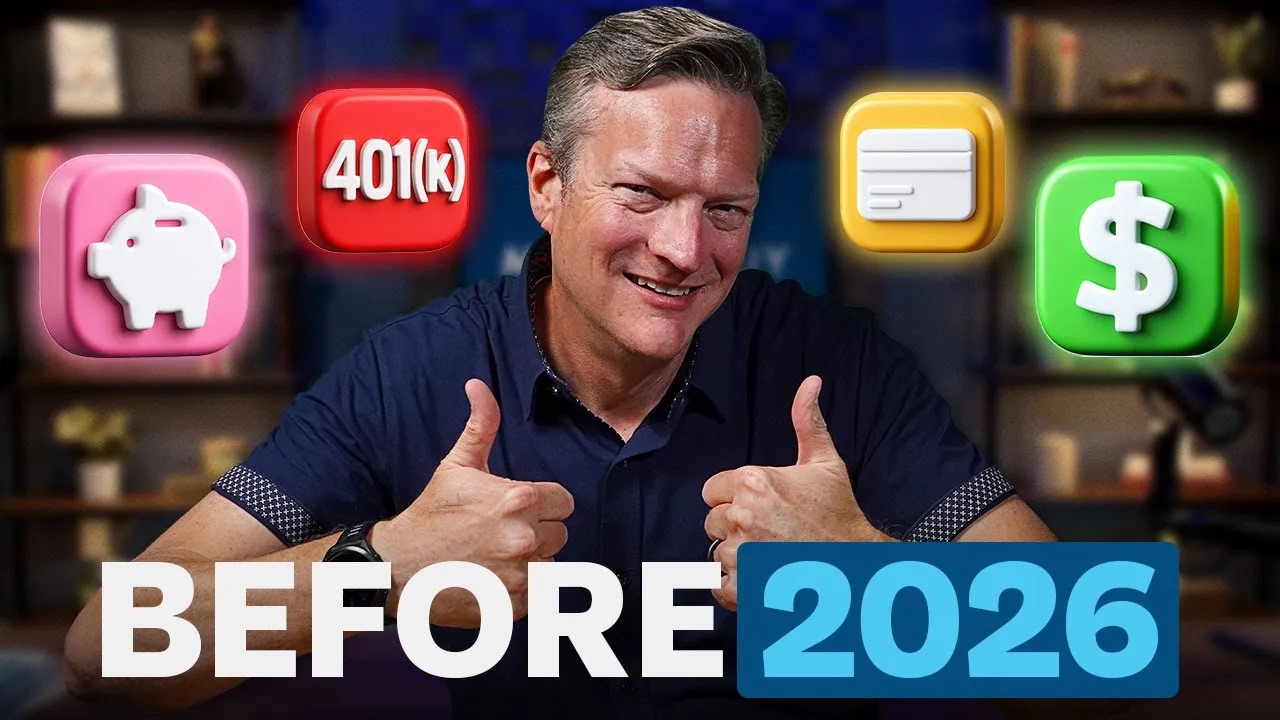We have a question up next. Can you explain the Rule of 55 in regards to retiring early at age 55 and immediately being able to pull from your 401k and your current employer's 401k without paying penalties? If I'm correct, this is a rule that a lot of people who want to retire early might be interested in. So, can you help them understand?
Yeah, so what most often happens with the retirement accounts, you think about Roth IRAs or traditional IRAs, the way that it's written is, "Hey, you have to put this money in there, and if you want to start drawing it out without paying penalties or, in the Roth case, without tax exam penalties, you have to wait until age 59 and a half." So, most people think, "Oh well, geez, I guess that means that I have to wait until I turn 60 to be able to retire." Well, what a lot of people don't recognize is there is a small provision that if you are someone who's planning on leaving the workforce early, if you are someone who wants to retire before 60, there might be an option available to you that I would say is a little-known option amongst most people.
Yeah, it's one. Be careful before you roll um assets out of your employer plans into those IRAs because if you do keep the assets at the employer, you have separation of service. You can actually get access to the money at 55 years of age and beyond without penalty. Now, you still have to pay income taxes. You have to be employed on your 55th birthday, so the 401ks, 403 Bs, pay attention to that. That is something that, whenever you do any type of rollover transaction, needs to go into your decision matrix of figuring out.
Now, I think it would be remiss if we didn't mention there are a group of you who have what's called 457s. You know, if you're a government employee or you work for a not-for-profit, those plans, what's so incredible about them is that they don't have any early restrictions on them. So, you know, IRAs are 59 and a half. That's something to pay attention to. 401ks, 403 Bs, if they've chosen that provision, it's 55. And then if you have a 457, there's not an age restriction on it. Pretty powerful planning thing. Just this all goes into your decision matrix. This is why one of those things I tell you, you can try to keep your financial life as simple as possible, but it's still going to get somewhat complicated just because all the decisions show up at once.
If you are at that point of retirement and you're trying to figure out how I do this right, how do I not screw it up, how do I not have blind spots? I've only had one retirement. I'd like to have somebody who's had hundreds of retirements to help me through this. Consider taking the relationship to the next level. Use the fulfillment of the abundance cycle where you learn, apply, grow. Now you're at this level of success. We work with people all across the country. I love that because it's... it gets complicated. It gets nuanced. We're talking about 55, pulling out a 401k. There are actually other provisions available. You can do 72T distributions. There are structures and strategies that you can do to access your dollars. So, it's not like if I don't have the 401k or if I wasn't employed when I turned 55 in the 401k, there are strategies that you can employ to be able to do that. Now, one of our favorites is following the
Financial Order of Operations, getting to Oh I said and getting to step seven hyper accumulation, and building up that after-tax bucket so that you have your Bridge money that can bridge you to age 55 or even from 55 to 59 and a half. But you hit the nail on the head. It's complicated, it can be nuanced, and you want to make sure you make those decisions well. So, if you're someone who's in that situation, we get a second set of eyes. Think about reaching out to a professional. We'd be happy to talk with you to talk about, "Does that make sense for me?" Want to know what to do with your next dollar? You need this free download:
the Financial Order of Operations. It’s our nine tried-and-true steps that will help you secure your financial future.













